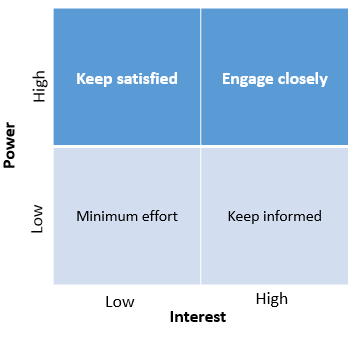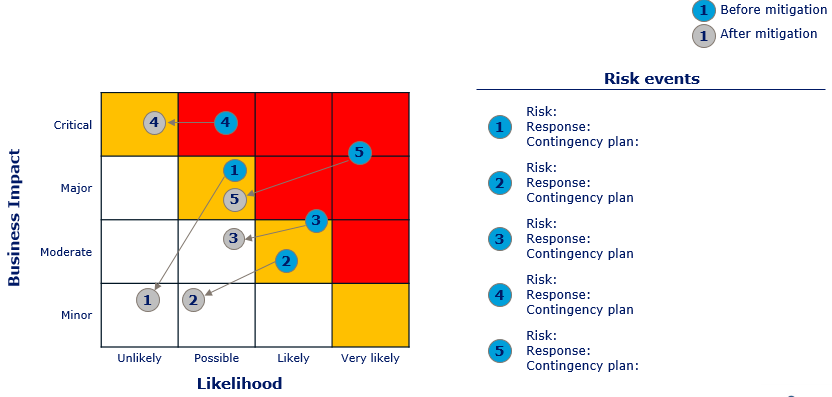Project Execution Model (PEM)
This article will give an overview of how Novo Nordisk in a standardized way handling projects. Novo Nordisk has work with projects in many years and therefore obtained a lot of know how about how to handling projects to secure the best output. For about 10 years ago, Novo Nordisk decided to use all that obtained know how to develop a standardized model about managing projects for the whole company. The Project Execution Model (PEM) was established that was based on many years of best practice. PEM is a stage-gate project model that consist of five phases, which guiding project managers to successful completion of each project phase. The main focus of PEM is investment projects, but can easily be adopted for non-investment projects as well. The procedure establishes a framework to ensure that projects are identified, captured, scoped, planned, executed and closed in a standardized and efficient manner according to the model. (Add a picture to the right with some facts about Novo Nordisk)
Each phase in the PEM model has a gate, where line management, portfolio manager, project owner, steering group and project sponsor evaluate the project. At gate 1, 2 and 3, these stakeholders review the project by either approve or reject it. At gates 4 and 5 line management evaluate and approve the project deliverables based on the PEM gate checklist
In the following, each phase will be described:
PEM 5 gate model
Phase 1
The first phase is characteristic of the idea phase. When the idea for a project is identified, the project manager need to find an owner project owner in which the idea is funded. The idea is described in collaboration with Line of Business(LoB) with the project objectives in a brief – this is to secure ownership from the beginning. In phase 1 the project manager should also create a one-pager which describes:
• Background for starting the project and top level objectives
• Scope of the project.
• Level 0 time plan – just a rough time plan that don’t need to be too detailed. Only top 10 milestones of the project which include gate approval dates
• A rough estimate of manning needs, quality strategy, risk list, environment health and safty screening (safty first is essential in Novo Nordisk project)
• Cost estimate: The project manager should make a pre-estimate of the cost budget. There is only a expectation of about 20 % contingency of the estimate.
As mentioned in the beginning the idea are either an investment or a non-investment project. It is required to make a preliminary stakeholder analysis together with top-level project requirements. The stakeholder analysis involves a 5 step-process, which are described bellow:
1. Identify stakeholder:
The process of identifying all people or organizations who are impacted by the project and documenting relevant information regarding their interest involvement and impact on project success. Bellow there is a grid to get a overview of how important the difference stakeholders are to the project
2. Plan communications with stakeholders:
The process of determining the project stakeholder information need and defining a communication approach. Here the project manager make a plan of who are the important stakeholders and related to, how often communication to the different stakeholders is made. There is a standard to use make the communication plan to the stakeholders:
3. Distribute information to stakeholders:
The process of making relevant information available to project stakeholders as planned. A key part of this involves planning and manage both current and new project information arriving. Here the project it is also important to consider how to communicate to stakeholder – by email, or a fixed meeting time every week/month.
4. Manage stakeholders expectations:
The process of communication and working with stakeholders to meet their need and addressing issues as they occur.
5. Report performance:
The process of collecting and distributing performance information, including status report, progress measurement.
Overall this phase is just to give a estimated overview of the project, to get an idea of the project. Normally there are only a contingency of 20% in this phase. Prior to gate the gate 1 approval, the idea is subjected to minimum the Corporate Vice President portfolio review. If the idea is also approved during Line of Business and if prioritizations and deliverables that are required at gate 1 are fulfilled, it enters the project portfolio as an accepted project, and go to phase 2.
Phase 2
Phase 2 is the Initiate phase. During the immediate start of phase 2, the project manager and project owner must establish a steering group. The role of the steering group during this phase is to help the project manager elaborate all business objectives and to evaluate and give direction on the project scope and scope alternatives.
The main deliverables in phase 2 for the project manager are:
• Ressource allocation: When starting phase 2 work, key Novo Nordisk project manning must be available and prioritized by LoB resource managers. Here it is recommended to make a brief organizational diagram with manning requirement and any increased headcount.
• Level 1 schedule: a more detailed project plan with 30-50 lines with deliverables and activity duration including milestones for 3rd phase.
• Environment, health and safety (EHS) assessment
• Cost estimate: The project manager should make a more detailed estimate of the cost. It is expected that the cost estimate have a contingency of 80% - which means that changes in the budget is not expected.
• The main deliverable for phase 2 is a clear scope recommendation for the project based on main scope and alternative scope.
A last key deliverable is the risk management. Here the top 10 risk are identified in a grid. The risk management process consist of a 6 step process which help to ensure that the risks of the project are identified and a response and monitoring are performed.
1. Plan risk management:
This is act of actively deciding and documenting in the project how risks shall be addressed. The risk management plan may state to what extent the project is willing to accept risks and plan how the continuing risk management shall be performed.
2. Identify risk:
First step in documenting risks in the project is to produce a list of identified risks for the project.
3. Perform qualitative risk analysis:
Categories each risk into a grid with business impact and likelihood.
4. Perform quantitative risk analysis:
Calculate the resulting risk costs, cost of mitigating and presumed costs of all known risks.
5. Plan risk response:
Decide on the appropriate response type for the top 10 risks and plan the actual work needed to bed one to mitigate transfer or avoid the risks.
6. Monitor and control risks:
Typical monthly review on known risks and bi annual reviews to identify new risks. Reporting status of key risks to steering group.
The steering group decide if the project manager have secure that all of above are in place. It that is the case and the project manager gets the approval the project can continue to phase 3.
Phase 3
Phase 3 of the project is known as the analyse phase. Before upstart of phase 3, it is essential that the key project manning for phases 3 and 4 is in place and approved by the project owner and project sponsor. If key manning is not in place, upstart of phase 3 should be postponed. In this phase of the project are the main planning of the project done by the project manager and key project team are in place based on the scope from phase 2. The main purpose of this phase is to analyse and describe a detailed solution. Furthermore includes the content of phase 3:
• A Work breakdown structure (WBS) (make a link to wikiarticle)
• If necessary small adjustments to the project plan
• Ensure stakeholder commitment, maybe the needs for communication have changed – it is needed to consider this in this phase.
• Risk analysis is further developed along with mitigating actions.
• Make a first draft of the training needs in LoB
• Final cost budget
At gate 3, the agreement and supporting document are subject to review and approval by steering group. Prior the final approval, the project manager must also seek local IT approval for the automations and IT solutions.
Phase 4
Phase 4 is the executing phase. In this phase, most of the project work is carried out, constructed or purchased. The project manager manages the project and project team within the limits defined in the agreement. The purpose of this phase is to develop, implement and roll-out the solution and secure a smooth transition from project phase to daily operation. The project manager is responsible for the following tasks:
• Direct and manage project
• Distribute information
• Manage stakeholder’s expectations
• Conduct procurement – Need to close all purchase orders and contracts, and report supplier performance.
• Ensure good EHS practice
In the implantation of the new business processes in the LoB, the organizational set up and competencies are updated, if needed. Also necessary training and organizational change management activtites are performed. The project manager also work on a package report with project learnings to steering group.
In order to pass gate 4, a project completion review are prepared by the project manager. The main purpose of the review is to gain final acceptance of the project deliverables and to collect learning point from the project planning and execution phase.
When all above is approved by the steering group, the project manager formally hands over the project deliverables to the project owner who then has the responsibility of realizing the benefits of the project.
Phase 5
During phase 5, the project owner realizes the project benefits. The project owner typically maximize realization of benefits by tracking KPIs. This is to ensure the solution is anchored in the organization. During this period, LoB is responsible for following up on supplier guarantees on equipment or buildings in due time before any guarantees expire, e.g. one year review on equipment or five year review on building parts.
After 6-24 month when benefits of the project have been shown a benefit review is prepared by the project owner for the project sponsor approval. The benefit review is mandatory for all projects.
Roles and responsibilities
In the following the roles and their responsibilities of the person, that are part of the project, will be described.
|Role |Responsibilities |- |Project manager |xxx



